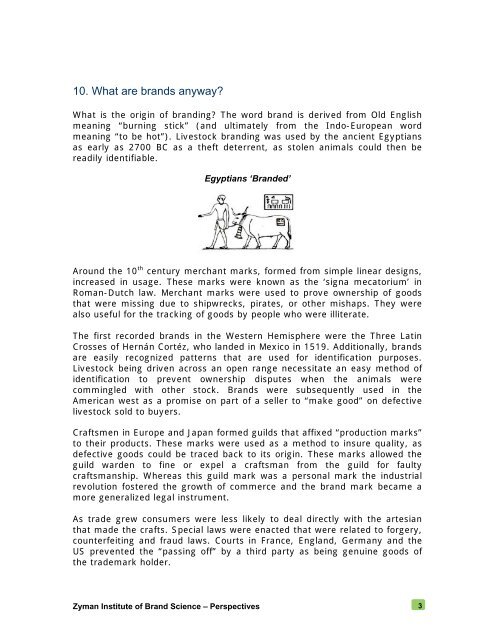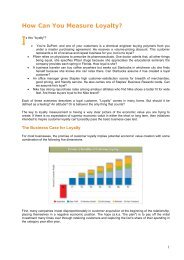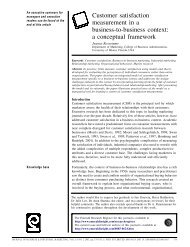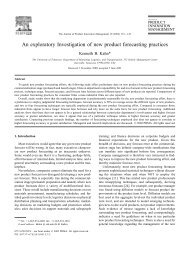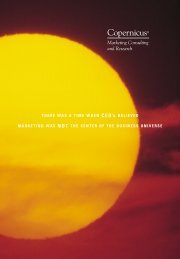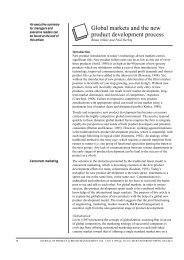The Executive's Guide to Branding
The Executive's Guide to Branding
The Executive's Guide to Branding
You also want an ePaper? Increase the reach of your titles
YUMPU automatically turns print PDFs into web optimized ePapers that Google loves.
10. What are brands anyway?<br />
What is the origin of branding? <strong>The</strong> word brand is derived from Old English<br />
meaning “burning stick” (and ultimately from the Indo-European word<br />
meaning “<strong>to</strong> be hot”). Lives<strong>to</strong>ck branding was used by the ancient Egyptians<br />
as early as 2700 BC as a theft deterrent, as s<strong>to</strong>len animals could then be<br />
readily identifiable.<br />
Egyptians ‘Branded’<br />
Around the 10 th century merchant marks, formed from simple linear designs,<br />
increased in usage. <strong>The</strong>se marks were known as the ‘signa meca<strong>to</strong>rium’ in<br />
Roman-Dutch law. Merchant marks were used <strong>to</strong> prove ownership of goods<br />
that were missing due <strong>to</strong> shipwrecks, pirates, or other mishaps. <strong>The</strong>y were<br />
also useful for the tracking of goods by people who were illiterate.<br />
<strong>The</strong> first recorded brands in the Western Hemisphere were the Three Latin<br />
Crosses of Hernán Cortéz, who landed in Mexico in 1519. Additionally, brands<br />
are easily recognized patterns that are used for identification purposes.<br />
Lives<strong>to</strong>ck being driven across an open range necessitate an easy method of<br />
identification <strong>to</strong> prevent ownership disputes when the animals were<br />
commingled with other s<strong>to</strong>ck. Brands were subsequently used in the<br />
American west as a promise on part of a seller <strong>to</strong> “make good” on defective<br />
lives<strong>to</strong>ck sold <strong>to</strong> buyers.<br />
Craftsmen in Europe and Japan formed guilds that affixed “production marks”<br />
<strong>to</strong> their products. <strong>The</strong>se marks were used as a method <strong>to</strong> insure quality, as<br />
defective goods could be traced back <strong>to</strong> its origin. <strong>The</strong>se marks allowed the<br />
guild warden <strong>to</strong> fine or expel a craftsman from the guild for faulty<br />
craftsmanship. Whereas this guild mark was a personal mark the industrial<br />
revolution fostered the growth of commerce and the brand mark became a<br />
more generalized legal instrument.<br />
As trade grew consumers were less likely <strong>to</strong> deal directly with the artesian<br />
that made the crafts. Special laws were enacted that were related <strong>to</strong> forgery,<br />
counterfeiting and fraud laws. Courts in France, England, Germany and the<br />
US prevented the “passing off” by a third party as being genuine goods of<br />
the trademark holder.<br />
Zyman Institute of Brand Science – Perspectives 3


